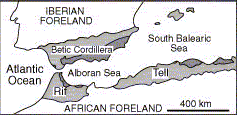|
A new WWF report, Biodiversity impact of the Moroccan drifnet fleet in the Alboran Sea, reveals that, with 177 boats, the Moroccan driftnet fleet is the most lethal for Mediterranean marine biodiversity. Dolphins are its prime bycatch victims. Between 3,000 and 4,000 striped and short-beaked common dolphins, a species that was recently included on the IUCN Red List of Threatened Species, are estimated to be caught every year in the Alboran Sea, in the Southwestern Mediterranean, alone. This is more than 10 percent of the area's dolphin population. According to WWF, a further 13,000 individuals are estimated to be caught around the Straits of Gibraltar and in neighbouring zones. The conservation organization stresses that Italian, French, Turkish and most probably other fishing fleets are using driftnets in breach of existing legislation.
The Italian driftnet fleet - with about 700 boats in the early 1990's - received subsidies from the EU for restructuring the fleet, but there are still up to 100 non-compliant boats. France (75 non-compliant boats), and Turkey (100) also have a sizeable driftnet fleet.
"The evidence we have gathered on the Moroccan fleet brings us to think that illegal driftnet fishing currently happening in the whole Mediterranean results in a massive slaughter of vulnerable species," said Paolo Guglielmi, Head of Marine Unit at the WWF Mediterranean Programme. "Nearly 2,500 miles of illegal nets from the Moroccan, French, Turkish and Italian drifnet fleets are ensnaring all that gets in their way."
|
